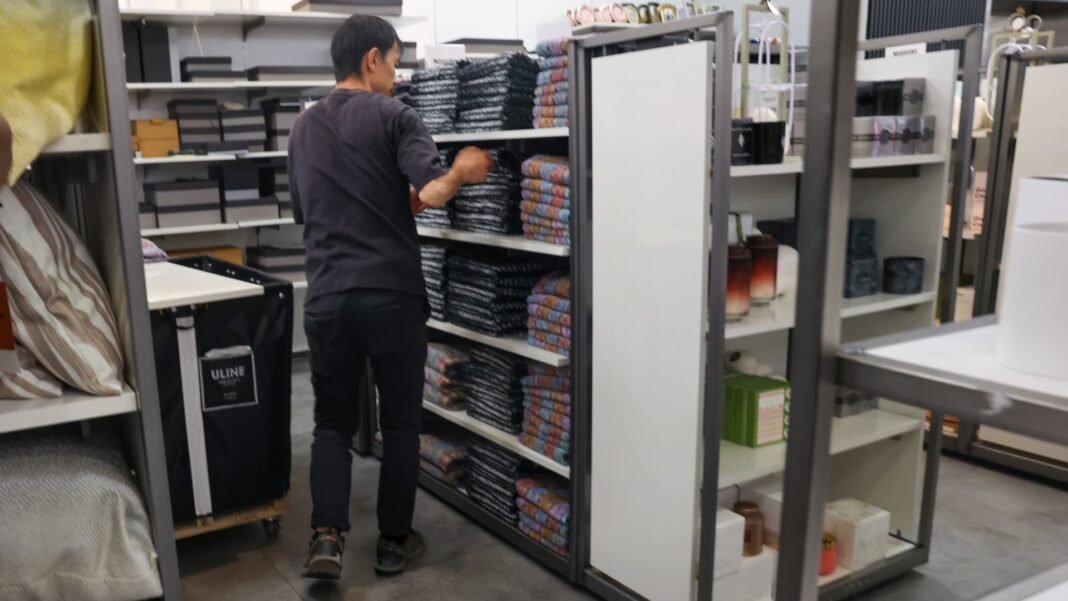Decoding Tariff Accounting and its Influence on Retail Profit Margins
The surge in tariffs on imports entering the U.S. has made the way retailers record these additional costs a critical factor in portraying their true profitability. The chosen inventory accounting method considerably shapes how tariff expenses are reflected in financial statements.
How Tariffs Reshape Retail Profitability
Tariffs impose extra fees on imported products at customs, increasing their landed cost. While debate continues over whether manufacturers, retailers, or consumers ultimately shoulder this burden, retail profit margins invariably feel the pressure.
An accounting technique called retail inventory method accounting (RIM) can temporarily obscure these rising costs by presenting inflated profit figures during periods of escalating tariffs.
The Distinctive Features of RIM Versus Conventional Cost Accounting
The retail inventory method estimates profits by applying an average cost-to-retail price ratio across a broad product range rather of tracking each item’s exact purchase cost individually. This averaging delays the immediate impact of sudden cost hikes-such as those caused by new tariffs-from appearing in reported earnings.
This delay often results in short-term overstatements of profitability until pricing and costs stabilize over several quarters. As a notable example, industry experts note that RIM is less reactive to initial cost changes compared to detailed item-level costing methods and only aligns with actual expenses once tariff rates settle and retailers decide how much expense to absorb versus pass along to customers.
current Usage Trends Among Leading U.S. Retailers
Approximately one-quarter of American retailers continue using RIM for financial reporting purposes. Major players like Walmart, Target, and Home Depot rely on this approach when calculating earnings-a practice that may mask the full extent to which tariffs have compressed their margins during recent fiscal periods.
A case study involving Walmart reveals that nearly 50% of its latest quarterly results reflect mixed tariff effects due to staggered inventory purchases made before and after tariff increases took effect. This staggered costing creates temporary distortions within gross margin figures reported under RIM accounting principles.
Tackling Volatile Trade Policies Through Strategic Accounting Choices
Walmart’s operational decisions have been shaped by its understanding of how RIM influences earnings amid shifting trade policies announced by government authorities. Following reciprocal tariffs introduced earlier this year targeting multiple countries, Walmart paused its operating income guidance for one quarter but maintained annual forecasts partly as RIM helped smooth out immediate financial shocks.
The company later indicated potential price increases driven by sustained higher import duties despite efforts to internally absorb some costs-a strategy criticized publicly but initially beneficial under retail accounting rules since absorbing more expenses inflates short-term profits when using RIM.
The Adjustment Period Required Under Retail Inventory Method Accounting
Industry analysis suggests it typically takes between two and four quarters for companies employing retail inventory methods-especially large non-fast fashion retailers-to fully adjust reported profits following important events like tariff hikes or reductions. During this adjustment phase:
- Earnings may appear artificially elevated initially;
- A subsequent dip often follows as adjustments catch up;
- Soon after,results tend toward reflecting true economic performance as averages recalibrate;
“Imagine steering a massive cargo ship versus a nimble speedboat,” explains an expert from EY’s advisory group: “The cargo ship (RIM) turns slowly because it carries averaged data across all stock; meanwhile,speedboats (cost accounting) respond quickly with precise item-level costing.”
The Temporary Margin Distortions Caused By Tariff reductions
If tariffs fall and retailers reduce prices accordingly while continuing with averaged-cost reporting such as RIM, margins might misleadingly appear squeezed even though underlying economics improve-a timing mismatch rather than genuine loss phenomenon highlighted by analysts examining margin fluctuations post-tariff cuts.
The Historical Roots and Limitations Behind Using Retail Inventory Method Accounting
This methodology originated long before modern computing tools were available-back when tracking individual item costs was impractical due to technological constraints or vast product variety within store inventories worldwide.
“Before digital spreadsheets became standard,” industry veterans recall humorously,”retailers had little choice but approximations based on averages.”

Migrating From Legacy Systems: Challenges And Progress
Larger department stores such as Macy’s and Nordstrom have recently shifted away from retail inventory methods toward weighted average or specific identification costing systems enabled through advanced technology platforms capable of SKU-level tracking across millions of items sold globally each year.
- This transition often requires multi-year projects involving complete system upgrades;
- A restatement process ensures comparability between historical data under old versus new methodologies;
- Cumulative investments frequently reach millions due to complexity involved;
- Despite hurdles approximately half those still relying on RIM are actively exploring conversion plans according to recent industry surveys covering 2024-2025 trends;
An Illustrative Comparison Between Costing Methods Amid Tariff Changes
A simplified example contrasting weighted average cost accounting (which tracks SKU-specific purchase prices) against retail inventory method (RIM),demonstrates how gross profit margins vary depending upon which approach is applied during periods affected by fluctuating import duties:
- No Tariffs Imposed:
Using three varieties of jackets sourced internationally at different unit costs sold at various price points – weighted average shows gross margin near 48%,whereas retail method slightly inflates it around 54% primarily because averaging smooths minor variations without immediate per-SKU reflection. - Surcharges Increase Costs Without Price Adjustments:
When tariff-related expenses rise but sales volumes & pricing remain unchanged – both models show declining margins; however,Retail Inventory Method still reports comparatively higher profitability. - Surcharges passed Fully Onto Consumers With Stable Sales Volume:
If retailer raises selling prices proportionally while maintaining sales quantities – both approaches indicate improved gross margin relative previous case though below no-tariff baseline; again,Retail Inventory Method yields stronger figures. - Surcharges Lead To Higher prices And Reduced Demand:
Reflecting realistic market responses were demand softens post-price hike – weighted average shows notable drop (~28%) whereas retail Inventory Method maintains inflated ~49% margin temporarily due to lagging ratio adjustments behind actual sales declines.

Navigating Financial Reporting Amid Dynamic Trade Landscapes
The gap between operational realities-such as sourcing strategies or supplier negotiations-and what appears within financial reports remains challenging especially when legacy systems like retail inventory method accounting (RIM) dominate practices. Companies may implement effective measures against rising input costs yet see limited reflection until several quarters later once averages realign properly within accounts payable cycles.
This disconnect complicates internal decision-making among executives striving for accurate performance assessments amidst volatile global trade conditions impacting supply chains daily.Ultimately grasping nuances behind different costing methodologies empowers stakeholders-from investors analyzing quarterly earnings reports through CFOs planning pricing strategies-to interpret numbers critically rather than accepting headline percentages at face value.
If you’re closely monitoring retailer earnings amid ongoing tariff fluctuations throughout 2025-26 fiscal years,walmart stock price forecast , target stock analysis , home depot investment insights ,and similar keywords remain vital focal points directly linked into broader macroeconomic shifts shaping consumer behavior nationwide today.





